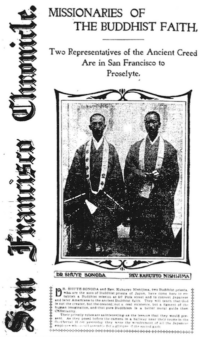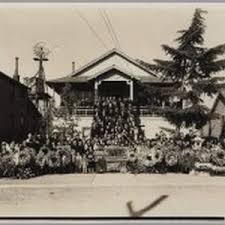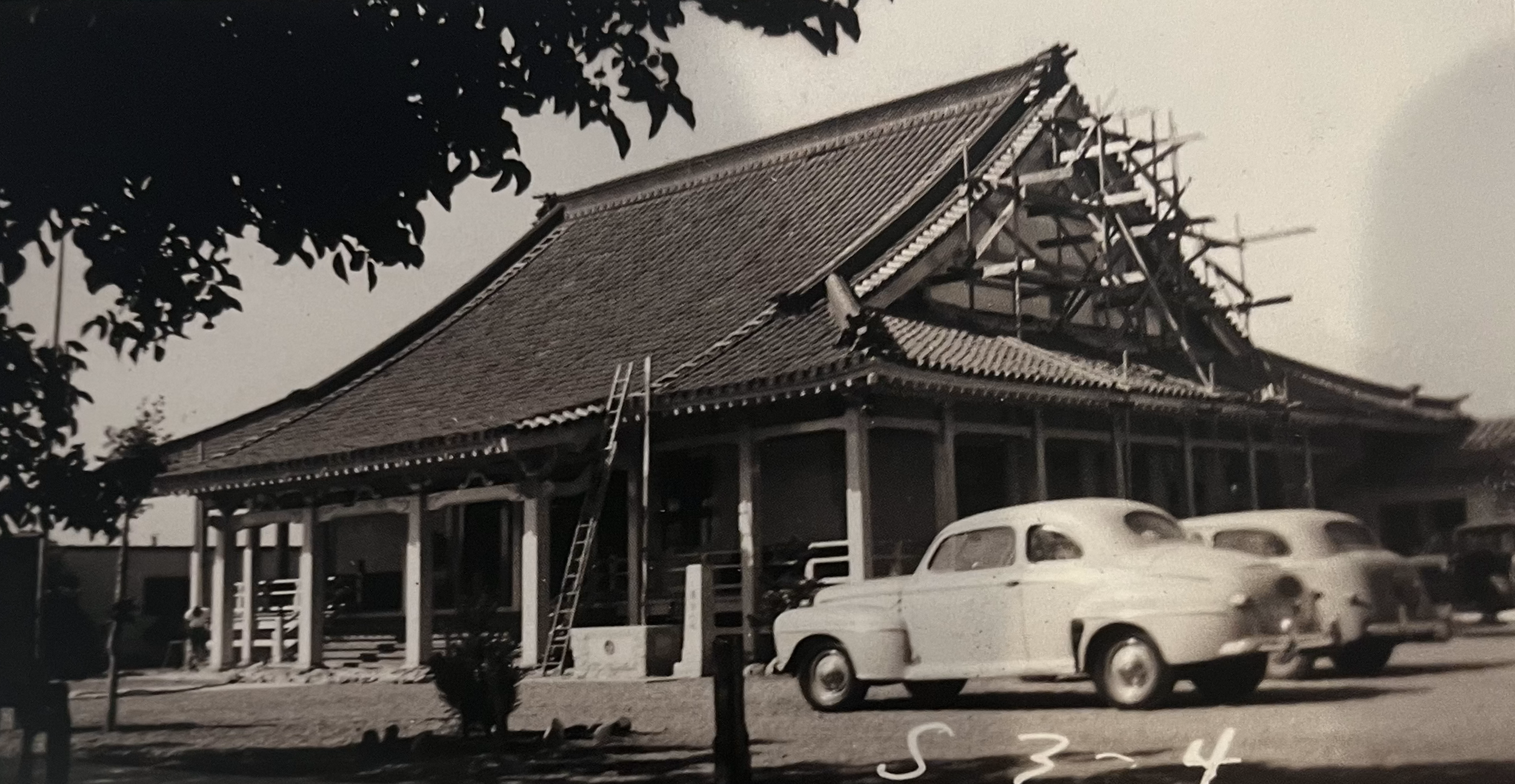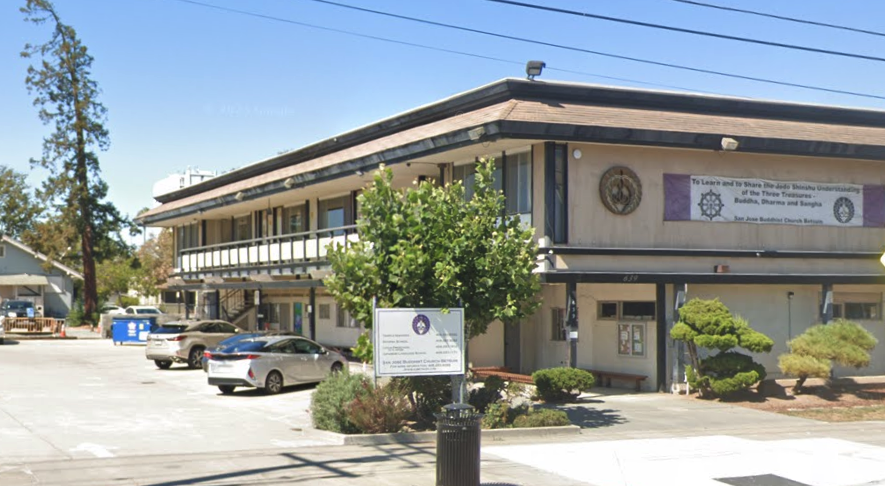History of the San Jose Buddhist Church Betsuin

The San Jose Buddhist Church Betsuin’s origin can be traced to the early Issei pioneers who immigrated around the turn of the twentieth century, first to help build the railroads across the continent and then to work in the farms of the Santa Clara Valley. At first, the San Jose church was a branch of the San Francisco church and was referred to as the “San Jose Branch of the Jodo Shinshu Mission to North America”. The temple began in August of 1902 when its leaders formalized their organization. In the early years, it was known as the “San Jose Jodo Shinshu Mission” and ministers journeyed from San Francisco to San Jose to conduct services.
The first temple was constructed in 1907 at the current site of our Annex building with Reverend Honen Takahashi as our first resident minister. This was a converted home with the main sanctuary on the top and a community space on the ground floor. Our current main temple was completed in 1937 in the middle for the Great Depression. It was designed and built by the Nishida brothers who had apprenticed as temple builders in Japan.


A compassionate attorney, J.D. Peckham, took care of the temple during the war years as Japanese-Americans were interned during most of World War II (1942-5). Following their release, many Japanese Americans lived temporarily in the facilities of the San Jose Buddhist Church using all the temple buildings.
With many Japanese Americans who pre-war lived in nearby farming area such as Monterey, Salinas and Watsonville choosing to remain in the San Jose area, the membership expanded beyond 1,200 families. To meet the increased need, the Annex Building was completed in 1954 at the site of the previous temple building, and the Education Building was completed over one of the previous parsonages in 1958.

- In 1964, the temple was honored with the “Betsuin” designation, in recognition of its size and position in the greater South San Francisco Bay region.
- In 1992, the temple constructed the Office Building to provide increased space for the staff of the Betsuin. This was built at a site of a house previously used as the bridal room.
- In 1997, the temple building was structurally reinforced to meet modern building standards.
- In 2002, in honor of its centennial, the Onaijin (altar) was redone by artisans from Japan.
- In 2012?, the Annex building was structurally reinforced as well as renovated. Elevator and a/c was installed.
Over thirty-four ministers have served the temple in over 100 years of history.
Today, the membership is over 700 families and unlike in the past, ethnically and culturally mixed.
Most former satellite temples have either become independent (Mountain View) or closed (Sunnyvale, Cupertino, Gilroy, Berryessa, Alviso, Campbell). Only one that remains is Morgan Hill Community Center.
